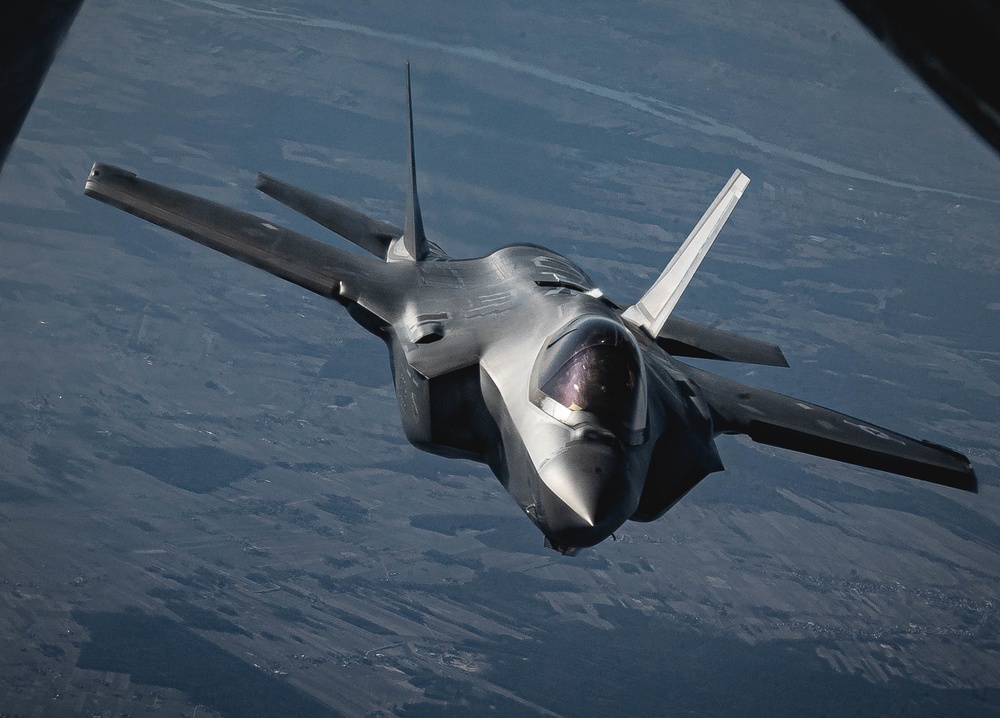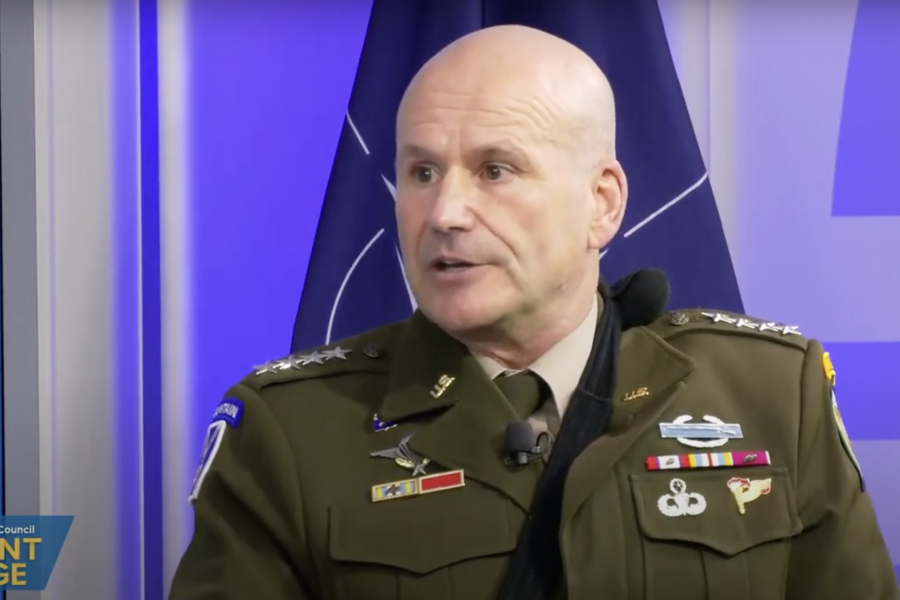Army Gen. Christopher G. Cavoli, head of U.S. European Command and Supreme Allied Commander Europe, warned that Russia would remain an enduring threat to NATO and global security, regardless of the outcome of the war in Ukraine.
“No matter how it works out after the war in Ukraine is concluded … I believe Russia will pose a long-term threat to the alliance, we will have a big Russia problem for years to come,” Cavoli said at an Atlantic Council event on May 17.
While Russia has deployed refurbished, older model weapons that are “not as high quality” during the conflict, Cavoli noted the Kremlin’s rapid reconstitution of military might in quantity as cause for concern. Pentagon estimates suggest Russia has suffered about 315,000 casualties since the beginning of the war, and 20 of its medium-to-large Navy vessels have been sunk, destroyed, or damaged since 2022. Nevertheless, Cavoli noted that the Russian army in Ukraine is now larger than it was at the beginning of the conflict, and it will continue to swiftly replenish its losses post-war.
“Russia will be on track to expand the size of its military, it has already announced its plans to do so,” said Cavoli. “It has ramped up industrial production and manpower intake in order to achieve these goals. It will be arrayed in the western parts of Russia and associated nations, perhaps on the borders with NATO, and it will be a large force.”
Amid these rising stakes, NATO has launched one of its most extensive military exercise series since the Cold War earlier this year. Dubbed Steadfast Defender, it will last six months and feature in part aircraft such as F-35s, F-15s, and UAVs (Unmanned Aerial Vehicles) across 13 different countries, including Sweden, the alliance’s newest member since March. Cavoli particularly highlighted NATO members’ air forces as a ‘great and growing success story,’ noting their current state of being well-trained and well-equipped, with plans for further fleet enhancement.
“I’m very confident about our ability to wage high-end warfare,” said Cavoli. “We are rapidly moving into fourth-generation-plus and fifth-generation, exclusively across the alliance. By 2030, there are going to be more than 600 F-35s in the alliance in Europe.”

Following Washington’s approval, several NATO members are expanding their stealthy F-35 fleets, with Belgium, Finland, and Poland anticipating receiving their first F-35s in 2024. Pentagon initially sought to include 68 F-35s in the fiscal 2025 budget, with a draft National Defense Authorization Act aiming to reduce the number to 58.
Cavoli noted that each additional aircraft integrated into a fifth-generation network is worth more than just one airframe, as it strengthens overall capabilities through expanded sensor coverage. He added that the platform’s capacity to incorporate other high-end fighters like Sweden’s Gripen and France’s Rafale will only create more opportunities in the future.
“They have a very strong, very realistic training program that focuses on all the high-end threats that we have today,” Cavoli said of the NATO Allied Air Command, led by USAF Gen. James B. Hecker. “Of course, focusing on the exquisite end of aerial combat means you’re probably not able to focus as much on things such as close air support, and that’s something we’re wrestling with inside the alliance. The good news is that the alliance does retain a huge number of fourth generation aircraft, so we still have the capabilities to do it.”
The U.S. and NATO allies are intensifying their preparations for complex scenarios by expanding exercises that integrate fourth and fifth-generation jets across Europe. Just recently, exercises have focused on Integrated Air and Missile Defense, simulated combat, electronic warfare, and coordination with ground forces.
According to Cavoli, NATO’s defense forces overall are not yet fully developed, and it’s imperative to expedite the process. With Russia and NATO engaged in a competitive buildup and modernization of their militaries, the realization of the allies’ force structure will determine whether Russia gains ground or NATO retains its advantage.
“Our commitment to that force structure requirement, and the speed with which we can get up to it, is really going to decide whether Russia has the advantage, or we have the advantage,” said Cavoli. “So, it’s less about the absolute question of ‘how fast Russia can reconstitute,’ and more about the relative question of ‘will we reconstitute faster?’”


